
While the original Pulse AIO offered great value for money, it was far from perfect, with a loose RBA base and cracking mods among the issues.
At the time, some of these issues were tolerable as there weren’t a lot of options when it came to cheap boro compatible devices – however, this has changed with a number of mainstream manufacturers jumping on the AIO bandwagon.
Product overview
The Pulse AIO V2 is an 80w, single 18650, alloy body, Boro compatible AIO device, that comes with the new Pulse AIO V2 RBA and tank.
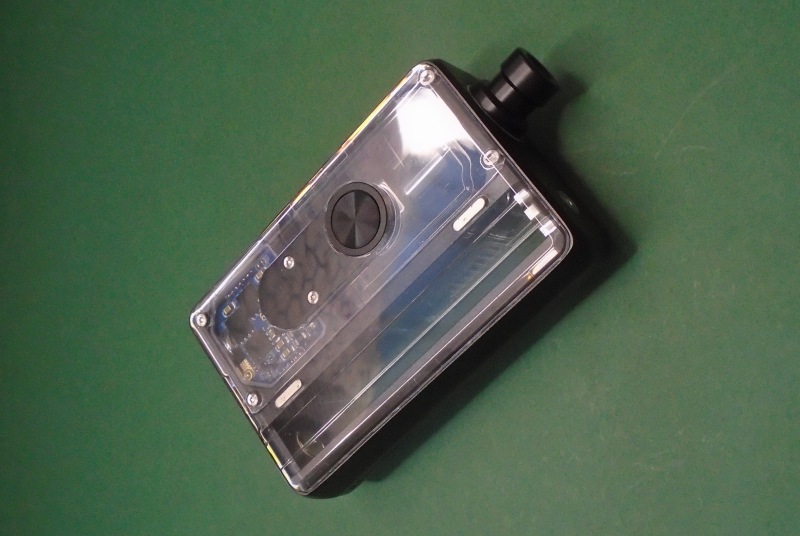
- Pulse AIO V2 device
- Pulse AIO V2 RBA and tank
- 4×RBA airflow pins
- 3×drip-tip inserts
- 510 adapter
- Spare drip-tip
Unlike previous versions of the Pulse AIO, this time there’s no stock-coil compatible tank.
Personally, I’m here for the RBA experience, so I’m 100% okay with that.
First impressions
The Pulse V2 is tiny, of course it’s smaller than the original Pulse AIO because that was 21700 compatible and this is 18650, but it’s also smaller than the 18650 compatible Pulse AIO mini.
It looks really nice, the transparent panels allow you to see your circuit board, battery and tank, my favorite aesthetic design detail is the small transparent panel on the bottom of the device.
It also feels nice, I have no issues with plastic mods (some of my favorite mods are plastic), but the alloy body of the Pulse V2, with its angled sides feels great.
Second impressions
While the transparent panels look cool, they seem to be made from the most scratch prone material in the world. I’d already seen Reddit posts commenting on the scratches, so I was extremely careful, but the panels are still getting numerous scratches on them.
Vandy Vape do offer metal panels, and one way of looking at this, is that it’s such good value for an AIO+RBA that another $15 for panels isn’t a big deal, the counter-opinion is that it’s unreasonable to have to spend $15 on panels when it should have come with decent panels to start with.
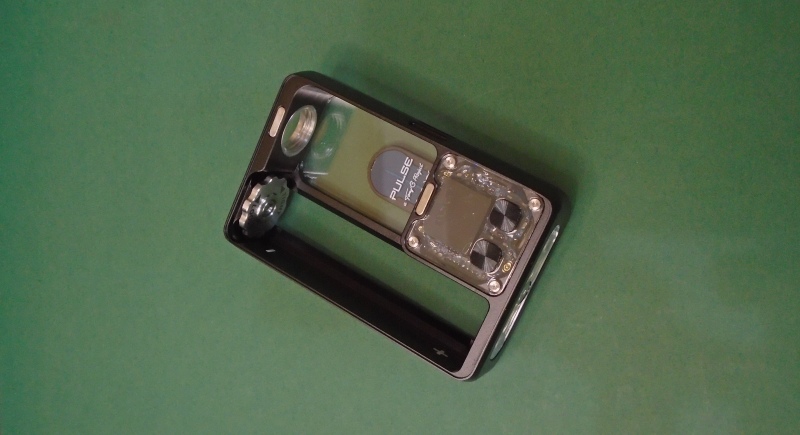
Chipset functions
Three clicks on the fire button allows you to switch between wattage, temp control, bypass and voltage modes.
Fire+Up locks the wattage (but not the fire button)
RBA
The RBA comes with a 510 adapter that allows you to build on the Pulse AIO, rather than looking for a mod; this is a great idea…or at least it would have been a great idea if it worked well, which it doesn’t.
It’s okay, the RBA has a 510 connection, so connecting it a mod shouldn’t be an issue, except it has such shallow threading that I couldn’t secure it on the first three mods I tried, the fourth mod was fine.
Fortunately building on the RBA is very simple, firstly choose your airflow pin (4.0, 3.0, 2.0, 1.5), secure your coil (2.5mm works well), I found that raising the coil slightly above level with the posts was good.
Wicking is probably the easiest I’ve experienced on any RBA (and much easier that most RTAs), cut the wicks long, put on the chamber cap so that the wicks are poking out of each side, cut them so that about 5mm is remaining outside the chamber and fluff them.
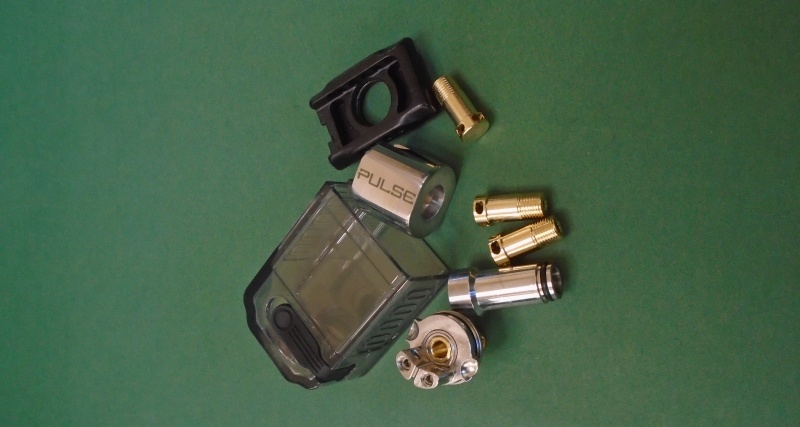
RBA performance
- 28g fused clapton 2.5mm 0.4ohms – this build worked really well at around 35w with the 2.0 and 3.0mm airflow pins. This gave a very nice restricted DL draw, with good vapor production and accurate flavor.
- 30g superfine MTL clapton 2.5mm 0.6ohms – for this build I tried to get something close to MTL so I used the 1.5mm airflow pin. If you’re looking for a traditional MTL draw this won’t satisfy, but for loose MTL this was great.
While I liked the performance of the RBA that came with the original Pulse AIO, this is a noticeable improvement in both flavor and ease of use.
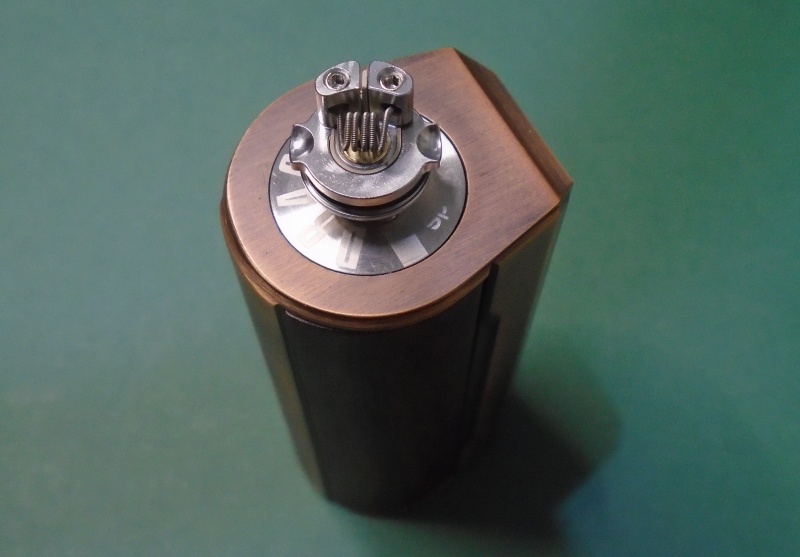
Drip-tip
Unlike the previous Pulse AIOs that was 510 drip-tip compatible, the V2 uses boro-style screw in drip-tips.
The supplied drip-tips are comfortable and have a choice of three inserts that allow you to adjust the bore.
One good discovery was that the flush nut from previous Pulse AIOs fits perfectly, allowing you to use your own 510 drip-tips. (it would have been nice if the V2 came with this flush nut though)
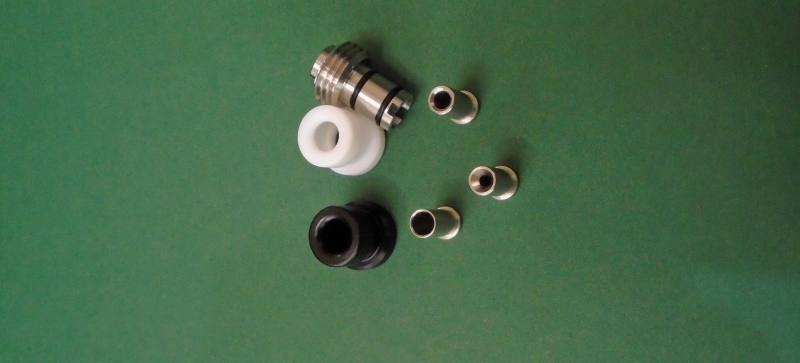
Condensation
There are no two ways about this, the Pulse AIO V2 suffers from condensation issues, all devices like this will have condensation, this is almost unavoidable when you have a tank in a box.
However, the main problem for the Pulse AIO V2, is where the condensation goes. In the previous Pulse AIO, the tank, the batteries and the chipset were all in their own compartments, in the V2 there’s no divider between the battery and tank, and the chipset is behind a little plastic panel that isn’t sealed very well.
So, you end up with juice on your battery and behind the transparent panel on your chipset, sure you can clean it constantly, but it’s annoying if you care about things like that.
In Vandy Vape’s defense, the chipset is IP67 protected, so theoretically the condensation won’t kill the device.
Rant
What I find most frustrating about most of the above issues, is that they were avoidable at the design stage and that they stem from prioritizing having something that looks fancy, over something that works well.
If the Pulse AIO V2 came with aluminum panels, had the chipset in a sealed compartment and a tiny divider between the tank and battery, it would be an almost perfect device. It might not look quite so cool, but once it’s scratched up and covered in juice, it no longer looks cool anyway.
Conclusion
Despite the negatives, it’s not a terrible device. The RBA is excellent, the device performs well, feels good and is tiny.
I guess it comes down to how much scratched panels (or paying for better panels) and cleaning condensation bothers you.
Disclaimer
The Vandy Vape Pulse AIO V2 was provided for the purposes of this review by Healthcabin.
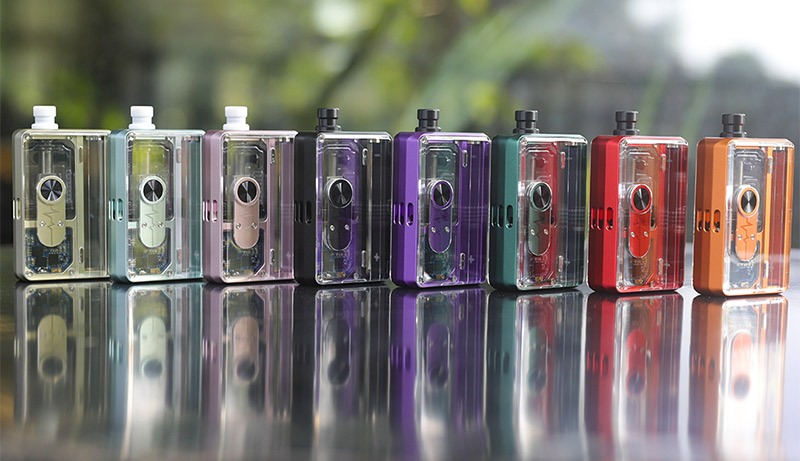
This review was written by Owen from Vaping Underground & Reddit, click to view original review there with more details.


